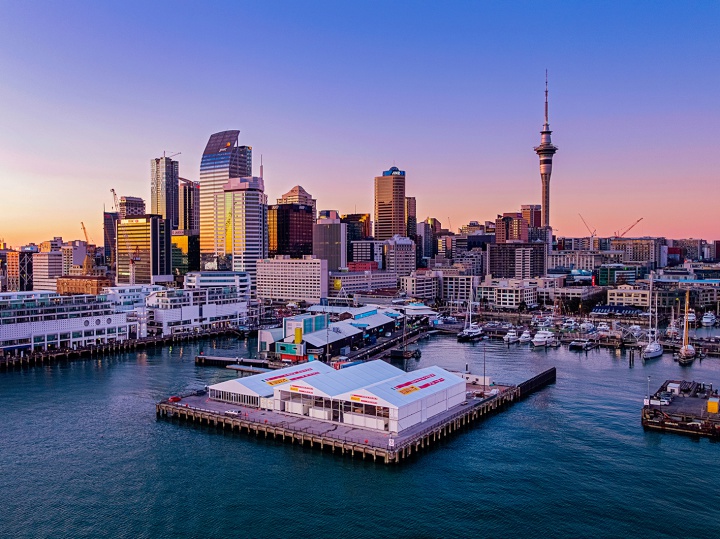Opportunity For Partnerships As CBD Office Fundamentals Change
The latest Auckland CBD office data from Bayleys Research demonstrates a significant rise in shadow space, an increase in vacancy rates across the office sector and tangible reassessments of occupancy requirements – all of which contribute to vast opportunities within the sector.

Lloyd Budd, Bayleys’ director Auckland Commercial & Industrial said the structural change being seen in the central Auckland office market has opened the doors to frank discussions between landlords and occupiers, and some bold decision-making from businesses.
“The 2020 shake-ups to the workforce and the ensuing workplace expectations has led to intelligent strategies and conversations among landlords and occupiers as they partner around space requirements and how leases are structured,” he said.
“While we are seeing almost 10% vacancy – including shadow space – across the Auckland CBD office sector, tenants have taken the opportunity to really examine what their future space requirements might look like and to secure a workplace that will take them through the next phases of their business plans.”
Budd said workplace fundamentals have come under scrutiny from occupiers as they emerge from the uncertainty that last year brought with it and, with business confidence rising and employment figures strong, he feels vacancy levels have peaked.
“There has been a notable flight to quality by corporate occupiers as new developments have come to the market offering attractive, sustainable workplace credentials,” he said.
“Businesses are hiring, they’ve learnt from the forced work-from-home experiment that company culture, training and collaboration are best served by a physical office and they’re using the drawcard of a quality building as a staff attraction and retention mechanism.
“Two prestigious office developments came onstream around the same time last year – namely Precinct Properties’ Commercial Bay and the Manson TCLM project Kiwibank House at 155 Fanshawe Street – and these buildings have absorbed a lot of the corporate business that was seeking a home.
“It is pretty unusual to have two developments of that quality drop into the market at the same time, and with other proposed developments some while off completion, we expect to see corporate vacancy levels stabilise.”
Budd said Bayleys currently has live enquiry on around 15,000sqm of Auckland CBD space as large-scale occupiers look to take advantage of current market conditions to secure favourable leases in optimal areas.
“The Symonds Street ridge has higher-than-usual vacancy levels largely due to the freeze on international language students coming into New Zealand, however the benefits of the central location remain attractive to a significant number of occupiers who now recognise market value in those locations.”
Budd said changing work models in response to improvements in technology and trends being seen globally mean that many businesses no longer require large tracts of office space consolidated in one central location, hence the sub-leasing of shadow space is an active part of Bayleys’ business in the CBD.
“For an occupier, sub-leasing unwanted space is potentially more efficient and bottom-line cost-effective than exiting a lease completely or relocating to a smaller place.”
This shadow space is putting some downward pressure on rents and is coming from various business sectors – particularly those that have been able to quickly and seamlessly switch to more-remote working models, or those that have faced significant restructuring and the subsequent reduced headcount.
Budd said some large occupiers are taking a long-lens view on space requirements and are yet to decide whether to downscale on pre-COVID office space commitments, while many smaller occupiers are also tentatively riding the wave by embracing shorter-term solutions before making any hard-and-fast longer term commitments.


 Imported Motor Vehicle Industry Association: EV Battery Fires Expose New Zealand Regulatory Gap
Imported Motor Vehicle Industry Association: EV Battery Fires Expose New Zealand Regulatory Gap  Electricity Authority: Electricity Authority Welcomes Plan To Empower Consumers And ‘Make NZ More Electric’
Electricity Authority: Electricity Authority Welcomes Plan To Empower Consumers And ‘Make NZ More Electric’ Pamu Farms: New Zealand Farm Dog Genetic Study Shows Top Five Health Risks
Pamu Farms: New Zealand Farm Dog Genetic Study Shows Top Five Health Risks EDANZ: Payments NZ Forcing The World’s Most Aggressive Removal Of EFTPOS Terminals
EDANZ: Payments NZ Forcing The World’s Most Aggressive Removal Of EFTPOS Terminals Great Journeys New Zealand: Back By Popular Demand, The Southerner Returns
Great Journeys New Zealand: Back By Popular Demand, The Southerner Returns New Zealand Association of Scientists: Budget 2025 Robs Researchers To Pay For Regulation
New Zealand Association of Scientists: Budget 2025 Robs Researchers To Pay For Regulation


